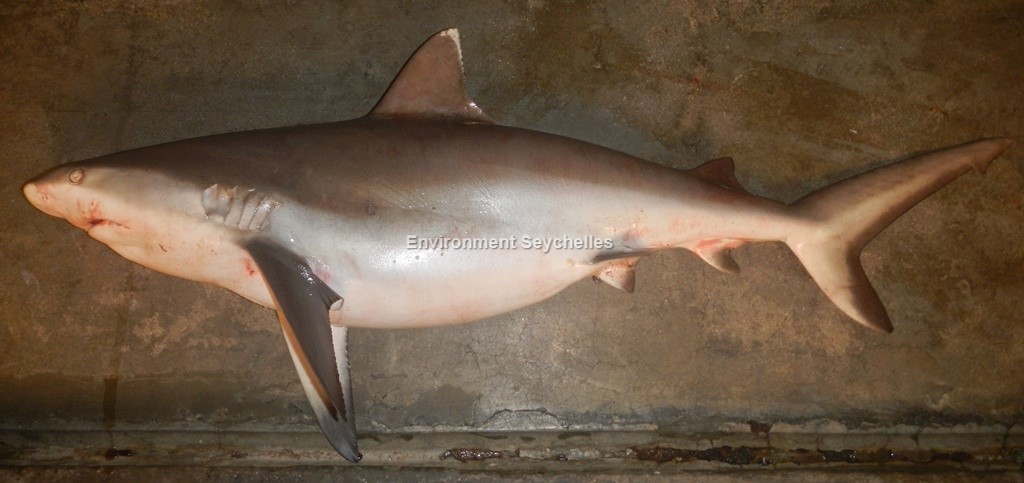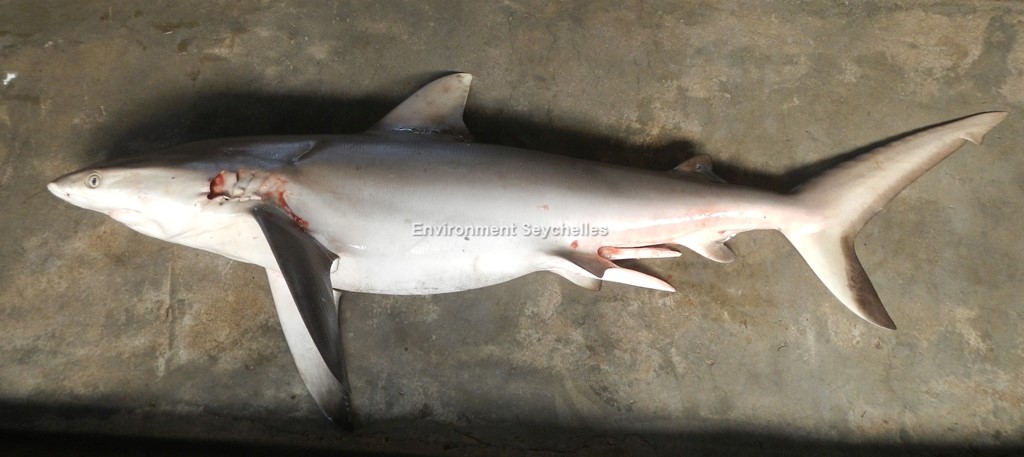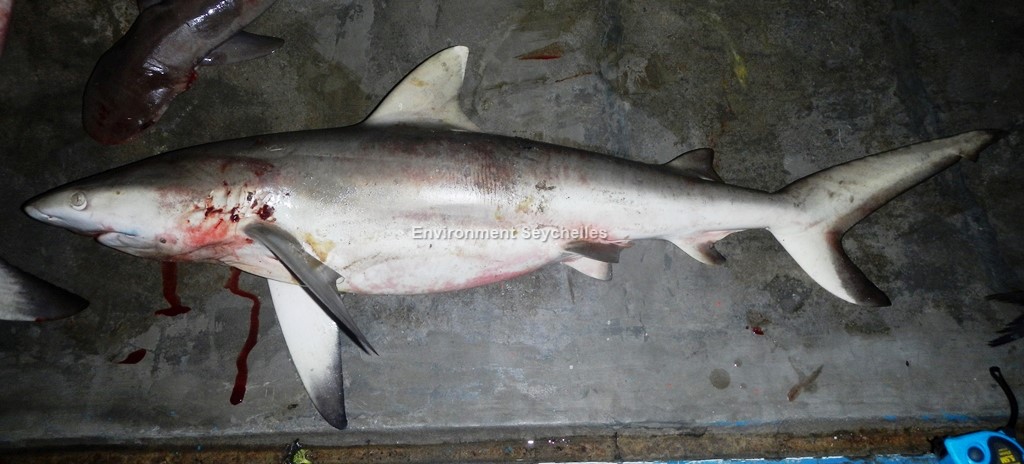Description:
Medium-sized, sturdy species. Dark grey to bronze grey back fading to grey/bronze on the flank to an off-white stomach. Caudal fin with conspicuous broad dark posterior margin.
Fins: D1 large semi-falcate with narrowly rounded to pointed apex. Colouration varies from plain through irregularly to prominently white-edged to white band on posterior edge.
Some degree of white marking on D1 is prevalent in Seychelles specimens. D2 relatively large with dusky/dark colouration. Occurrence of interdorsal ridge varies from none
to quite broad ridge midway between dorsal fins. Pectoral fins large, narrow and falcate with dusky/dark (not black) ventral tips. Caudal fin has conspicuous broad dark
posterior margin. Anal and pelvic fins with dusky/dark apices.
Head: Broadly rounded moderately long snout, nostrils large with prominent incurrent depression and small anterior nasal flaps. Large circular eyes, inconspicuous labial
furrows. Mid-sized gill slits.
Size:
Born 45-75cm TL. Mature: Male 110-145cm TL, Female 120-135 cm TL. In Seychelles waters largest specimen one can expect to see is 180 cm TL.
Habitat and Ecology:
Continental and insular shelves and adjacent oceanic waters. Common on coral reefs. Found throughout the Mahe plateau. Feeds on small teleosts, cephalopods and crustaceans.
Viviparous 1-6 pups per litter after gestation of approx 12 months. The species exhibits an extended breeding season in Seychelles April – November, with peaks in April/May
and Oct/Nov.
Fishery Status:
This species is not protected. It is however illegal to fish for sharks with nets (Fisheries Act, Reg 16.c). It is subject to hook and line, short anchored long and illegal
net fishing. Grey reef shark is the species, by weight, most commonly landed by the artisanal fishery. A 2013-2018 catch monitoring survey indicates a gradual and ongoing
reduction in the average size of specimens being caught. Divers also report a significant decline of populations at former aggregation sites over the last 30 years.
Notes:
Garrick (1982) classified the grey reef shark in the western Indian ocean as being a distinct species and termed it Carcharhinus wheeleri. This was based primarily on
differences in the morphology of the snout and colouration of the D1 fin. In the Seychelles though the snout dimensions have not been further investigated the D1
coloration shows all the intermediate forms from plain grey to thick white trailing edge suggesting a phenotypic variation in the local population
References:
Fisheries Act 2014. Prohibition of net fishing of sharks, Reg. 16c of 1st August 1998. (Carried over from the 1986 Fisheries Act as per Fisheries Act 2014 para 79:
Savings and Transitional provisions).
Garrick, J.A.F. (1982). Sharks of the Genus Carcharhinus. NOAA Technical Report NMFS Circular 445. Dept of Commerce, USA.
Nevill, J.E.G. (2018). Artisanal Shark Fishery database.
Nevill, J.E.G. et al (2015). An Identification Guide for the Sharks of the Seychelles Artisanal fishery.
SFA (2016). Seychelles National Plan of Action for the Conservation and Management of Sharks.
Simpfendorfer, C. et al (2020). Carcharhinus amblyrhynchos. IUCN Red List 2020: e.T39365A173433550. https://dx.doi.org/10.2305/IUCN.UK.2020-3.RLTS.T39365A173433550.en.
(02/04/21).
Citation:
Nevill, J.E.G.(2019). Seychelles Seatizens. Carcharhinus amblyrhynchos, Grey reef shark. https://seatizens.sc/species/carcharhinus-amblyrhynchos-bleeker-1856/ (Updated 21/09/21).




There are no comments